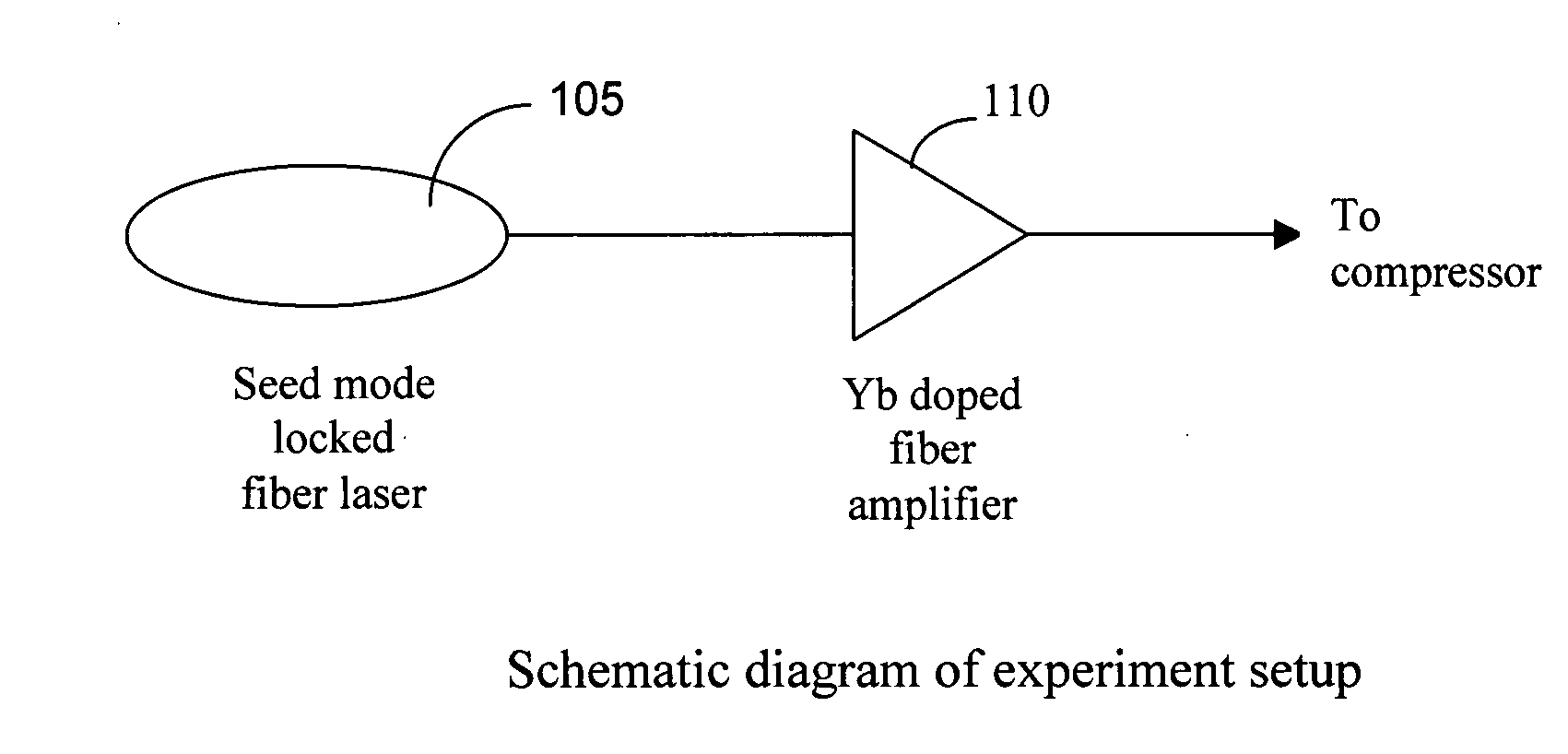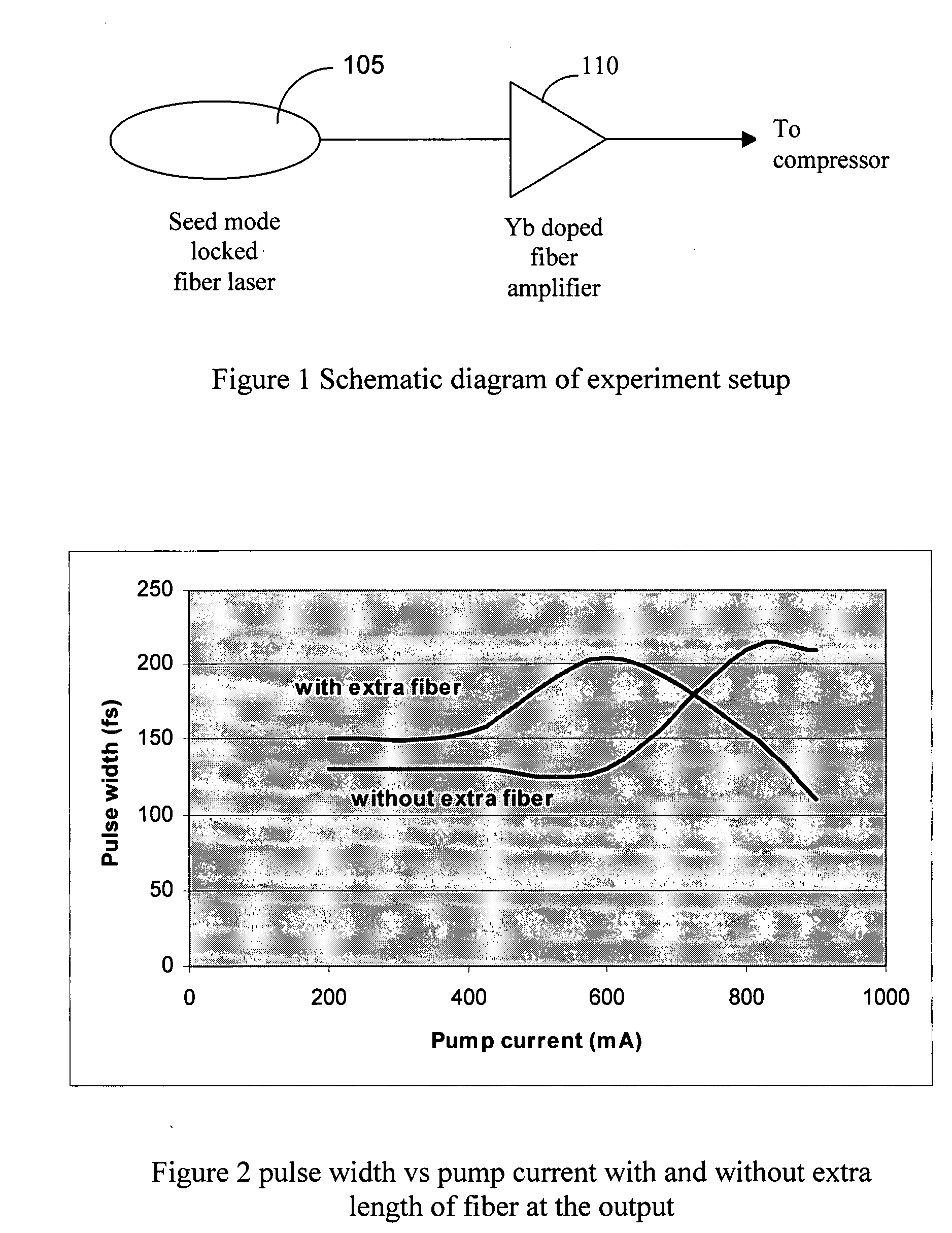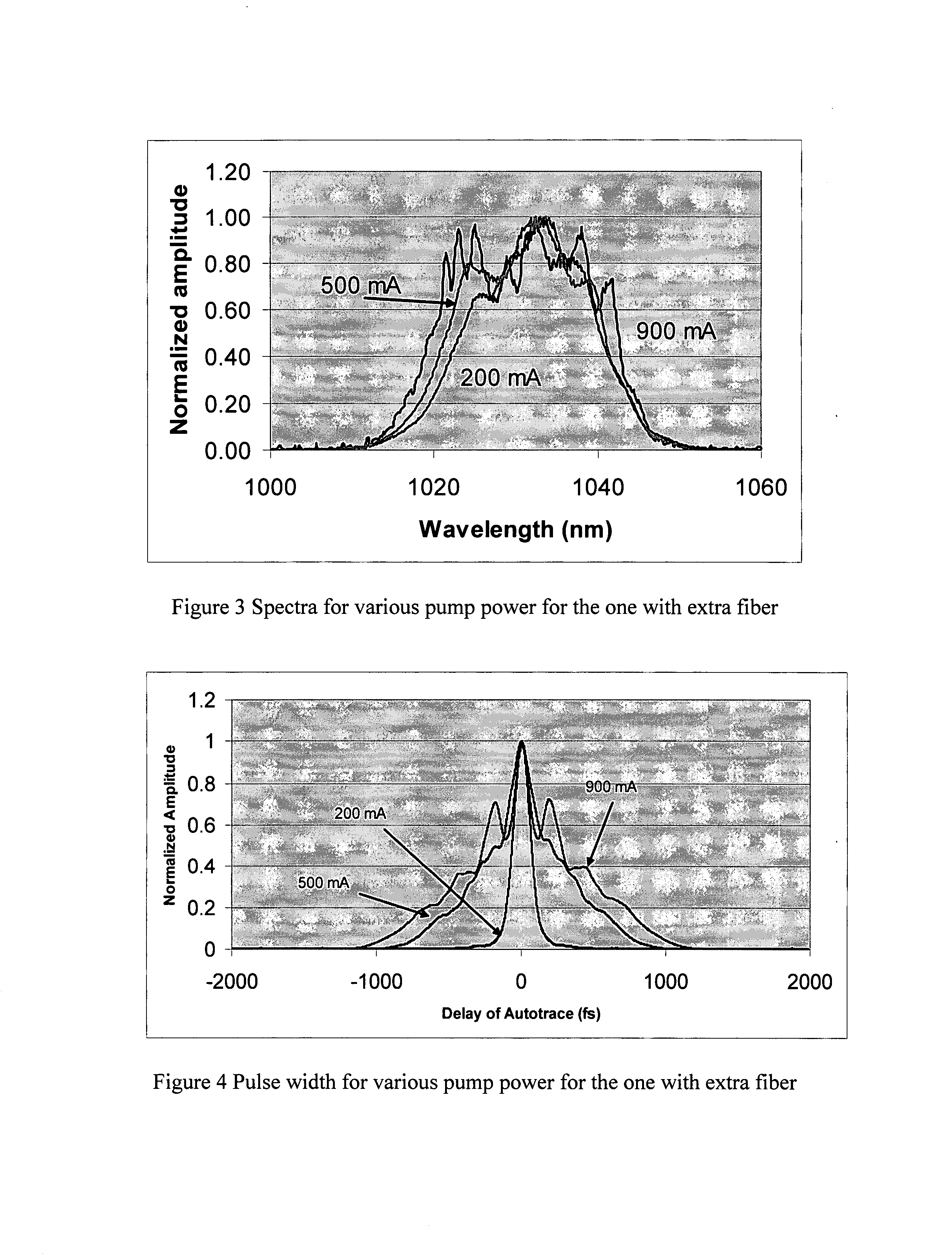Reduction of pulse width by spectral broadening in amplification stage and after amplification stage
a fiber laser and spectral broadening technology, applied in the field of fiber laser systems, can solve the problems of limited cpa systems, limited cpa systems, and limited ordinary skill in the art, so as to reduce the width of pulses, increase the spectral bandwidth, and broaden the spectral bandwidth
- Summary
- Abstract
- Description
- Claims
- Application Information
AI Technical Summary
Benefits of technology
Problems solved by technology
Method used
Image
Examples
Embodiment Construction
[0019]Referring to FIG. 1 for a schematic diagram of a laser system 100 that is implemented for taking advantage of the SPM spectral broadening technique of this invention. The laser system 100 includes a laser seed 105 for generating a seed laser. The seed laser 105 is a mode locked fiber laser operating at 1030 nm spectral with about 3 mW of power for projecting a laser into a fiber amplifier 110 using a Yb doped fiber. The seed laser is first stretched to 10 ps pulses before the laser is projected to the amplifier 110. A grating compressor (not shown) is used to compress the laser pulse after amplifier 110. The amplifier output an average power up to 250 mW. FIG. 2 shows that when the length of fiber 120 after the amplifier 110 is 2 m at the output, the pulse width can be reduced significantly because of the SPM induced spectrum broadening. FIG. 2 also shows that the SPM effects distort and broaden the pulse width where there is not enough spectrum broadening. As shown in FIG. 2,...
PUM
 Login to View More
Login to View More Abstract
Description
Claims
Application Information
 Login to View More
Login to View More - R&D
- Intellectual Property
- Life Sciences
- Materials
- Tech Scout
- Unparalleled Data Quality
- Higher Quality Content
- 60% Fewer Hallucinations
Browse by: Latest US Patents, China's latest patents, Technical Efficacy Thesaurus, Application Domain, Technology Topic, Popular Technical Reports.
© 2025 PatSnap. All rights reserved.Legal|Privacy policy|Modern Slavery Act Transparency Statement|Sitemap|About US| Contact US: help@patsnap.com



